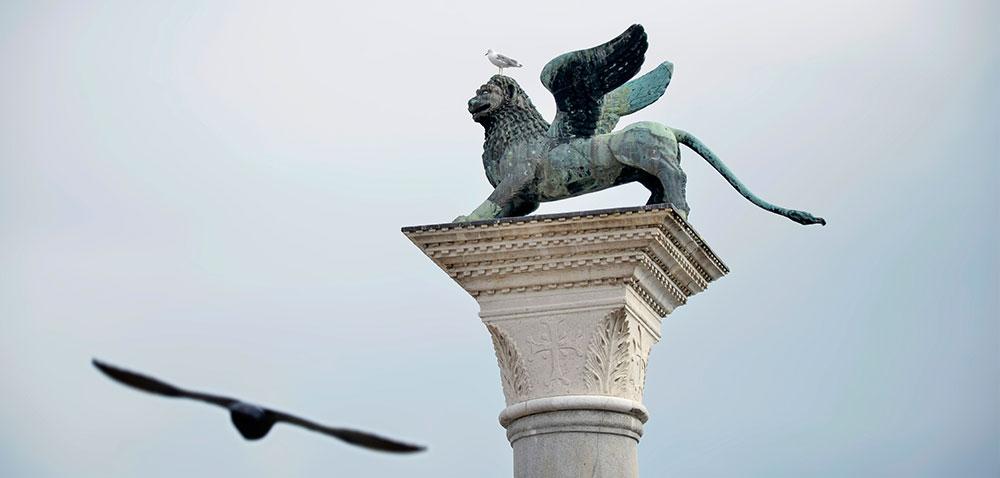Hear Venice Roar

While Florence is proud to have the lily as its emblem in the form of the fleurs-de-lis, Venice chose something a little more aggressive – the Lion of St. Mark.
Explore the streets, or canals, of the city and you won’t fail to notice a depiction of the creature peering out from archways, or looming large over windows and eaves. More than just a symbol of strength, St. Mark’slion, most commonly depicted winged, with one paw raised over St. Mark’s gospel, represents the dominance over Mediterranean waters the Venetians once had. The iconic lion also takes another form in a symbol closely linked to the lagoon of Venice – his large face peering out from a mane of soft-shell crab pincers.
So important was the lion as a symbol of power, nobility would actually keep lions captive in their gardens – more than an ample deterrent to would-be thieves.
Along with power, comes truth and honor. And so it came to be that the lion was also used as a means of keeping law and order. Should a Venetian wish to report a crime or wrongdoing, they could place the name of the offender, and two witnesses, anonymously into the open mouth of one of several stone lion heads mounted on the city walls. As a result, the perpetrator would be summoned to defend themselves against the accusation, with harsh punishment should they be found guilty. Like the real Venetian lions, the stone lion’s ‘mouth of truth’ was enough to make any criminal think twice.
